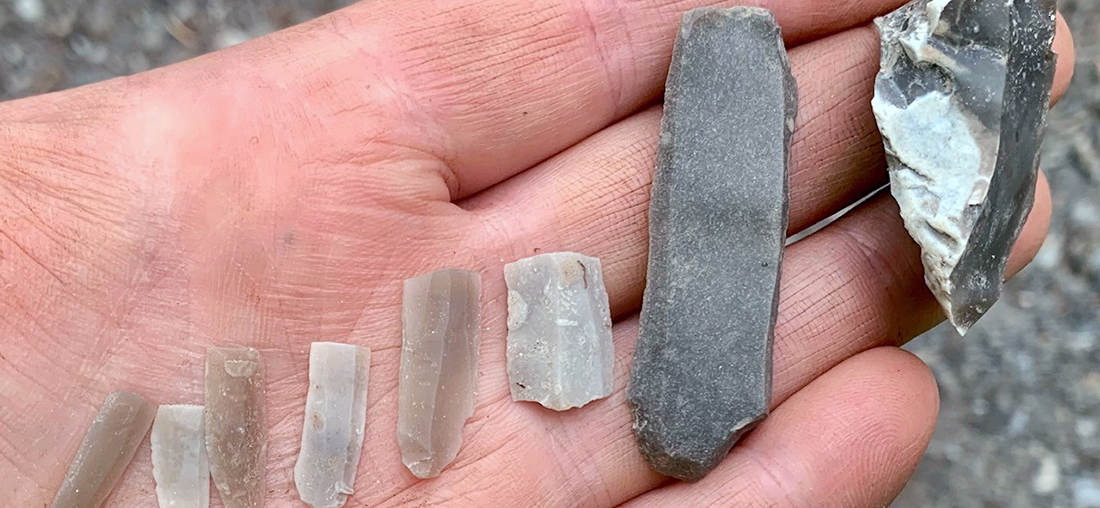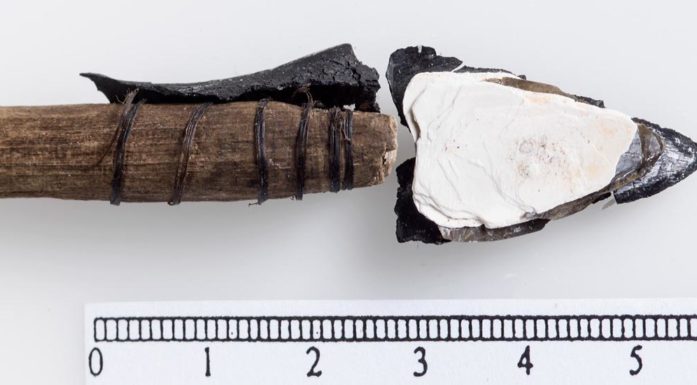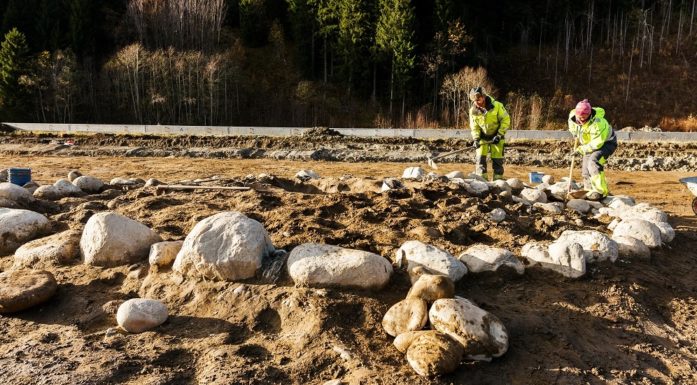Rare Stone Age discovery in mid-Norway
When archaeologists recently carried out an excavation at Vinjeøra in southern Trøndelag County, they made a surprising discovery that they had only dreamed of finding.
Archaeologist and Project Manager Silje Elisabeth Fretheim made a bold claim: She said she would eat her hard hat if the settlement they were excavating at Vinjeøra wasn’t a Stone Age discovery from some of the first people to settle along the Norwegian coast, around 11,500 to 10,000 years ago.
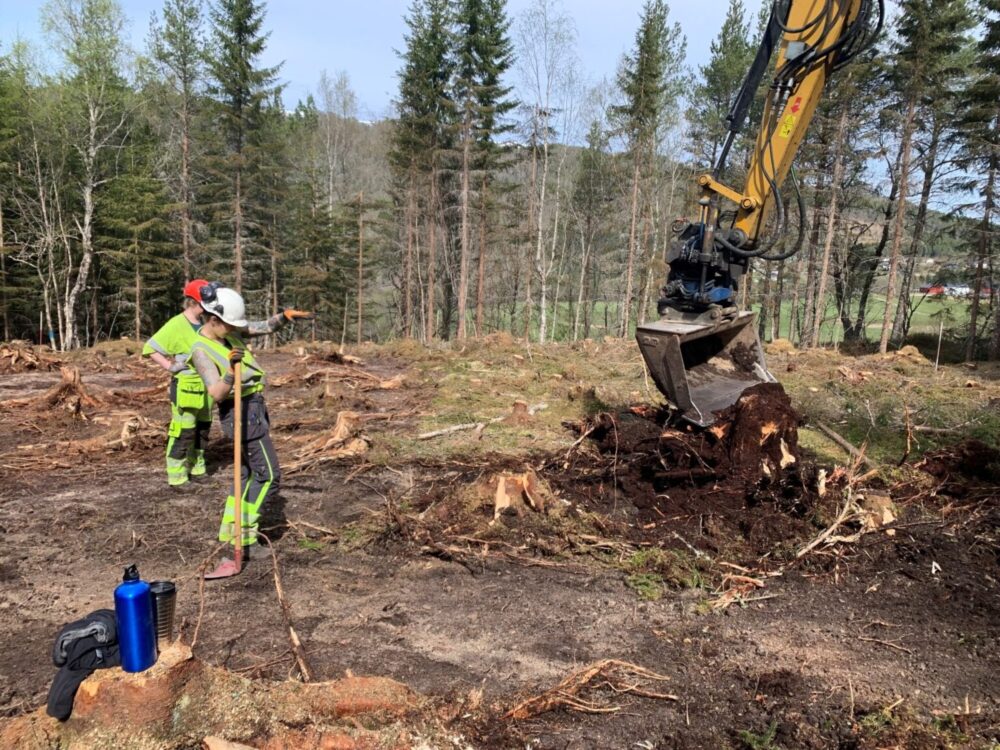
Archaeologists don’t just dig with a shovel. Here, the top layer of soil in the excavation area is removed before the “fine digging” begins. Photo: Silje Elisabeth Fretheim
The first discoveries to make it to the surface seemed very promising, large pieces of flint that were highly reminiscent of early, pioneer settlements.
However, it soon became clear that Silje would be closer to eating her hard hat than expected. What they had found was something else entirely and much more exciting.
The people from the East
When the excavations in Vinjeøra got under way properly, the researchers suddenly discovered artefacts that looked nothing like would be expected from a pioneer settlement, but had completely different characteristics.
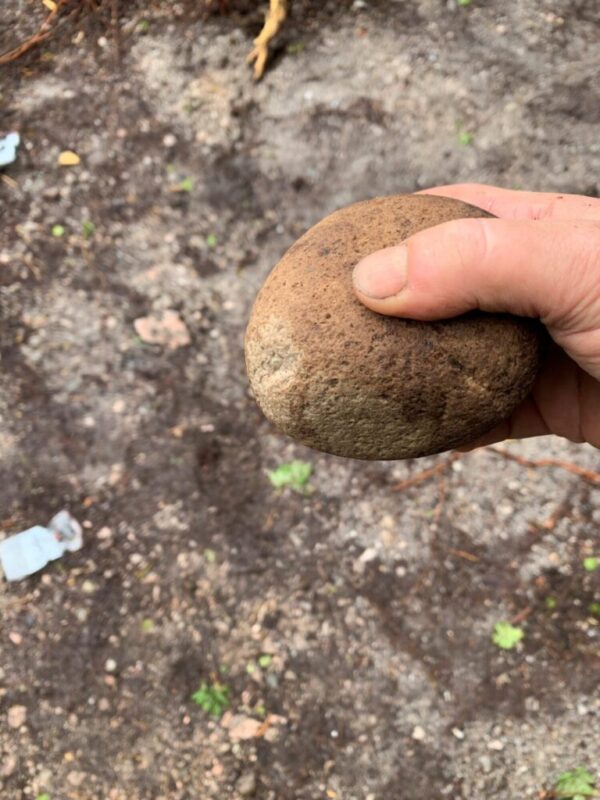
This is a type of stone hammer, a tool flint smiths used to shape tools. The technique used by the eastern immigrants was quite difficult. It’s something you have to be trained in, it’s not something you can copy just by looking at a tool, Fretheim said. Photo: Silje Elisabeth Fretheim
“We found small and medium-sized flint objects that we refer to as lithics and microlithics. Several had sharp edges that were so straight and parallel that they could have been made using a ruler,” says Fretheim, an archaeologist at the NTNU University Museum.
“We also came across a conical lithic core and there was little doubt that we had discovered a different type of stone technology than we associate with pioneer culture,” she said.
Instead, the researchers found evidence from people who came to Finnmark from the east around 9000 BC.
- You might also like: Central Norway’s largest burial mound likely contains a ship burial
Two waves of migration
The ice remained the longest in Scandinavia compared to the rest of Europe during the last Ice Age. The Norwegian coast only became free of ice around 12,500 years ago. The first people arrived in what we now know as Norway and Sweden around 1000 years later.
Skeletal analyses have previously shown that Scandinavia experienced two major waves of migration in the time after the ice had started to retreat. The first came from the southwest. It was made up of people who had lived in modern-day Spain and Portugal during the last Ice Age and who later moved north as the ice melted away. They were blue-eyed, but their skin was darker than today’s Scandinavians.
“They populated the entire Norwegian coast up to Finnmark in just a few centuries,” Fretheim explains.
A thousand years later, there was another major wave of migration, this time from the northeast. These were people who had travelled from areas around the Black Sea or Ukraine, heading north through Russia and Finland to the coast of Finnmark. They had lighter skin and their eye colours varied.
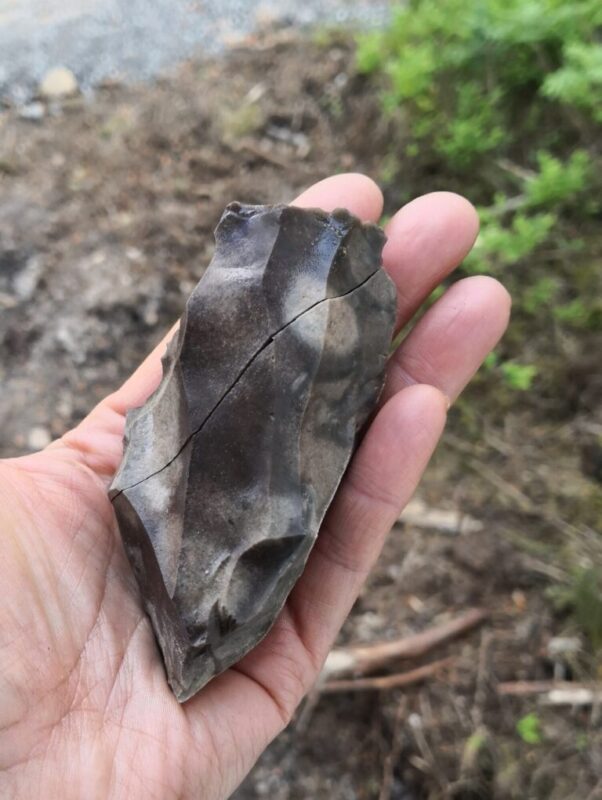
Unusually large piece of flint that has cracked across and then been discarded. Still a lot of fine flint left that could have been used further, but for one reason or another has not been done. Photo: Jenny Kalseth
They had their own technique for creating stone tools, which clearly differed from the techniques used by the migrants from the south. This technique eventually took over and became dominant.
“It looks as though the two cultures met and both had something teach the other. The people from the east brought new technology, while the people from the south knew the landscape and way of life along the coast, which must have been unknown to the people who arrived from the inland areas to the east,” Fretheim says.
It appears that the people from the east absorbed the lifestyle of those who were already here and, during the early centuries, they lived a nomadic life in lightweight housing structures, perhaps tents. Their food came from the sea and boats were likely key, just as they were for the pioneers from the south.
“DNA studies also show that the two groups mixed,” Fretheim said.
- You might also like: Unique Viking textiles found in woman’s grave
A very unusual find
So why is it so exciting to discover artefacts from the eastern wave of immigrants?
“While we have found lots of artefacts from southern migrants — the pioneer culture —along the outer coast of Central Norway to south of Trondheim Fjord, there have been virtually no discoveries in that region that can be confidently traced back to the earliest migrants from the east,” Fretheim says.
“One exception is a small settlement near Foldsjøen in Malvik, which was excavated in the 1980s,” Fretheim said.
There is nothing mysterious about the lack of evidence from the eastern immigrants on the outer coast. Changes in sea level in the centuries that followed the Ice Age mean that most of the evidence of settlers along western coast of Norway during the 8500-7000 BC period have disappeared, washed away, eroded or buried in beach sediment.
“For this reason, there are very few discoveries from these people to be made between Finnmark and Eastern Norway,” Fretheim says.
“Deep in the fjords, however, the uplift progressed differently and settlements here were consequently preserved,” she said.
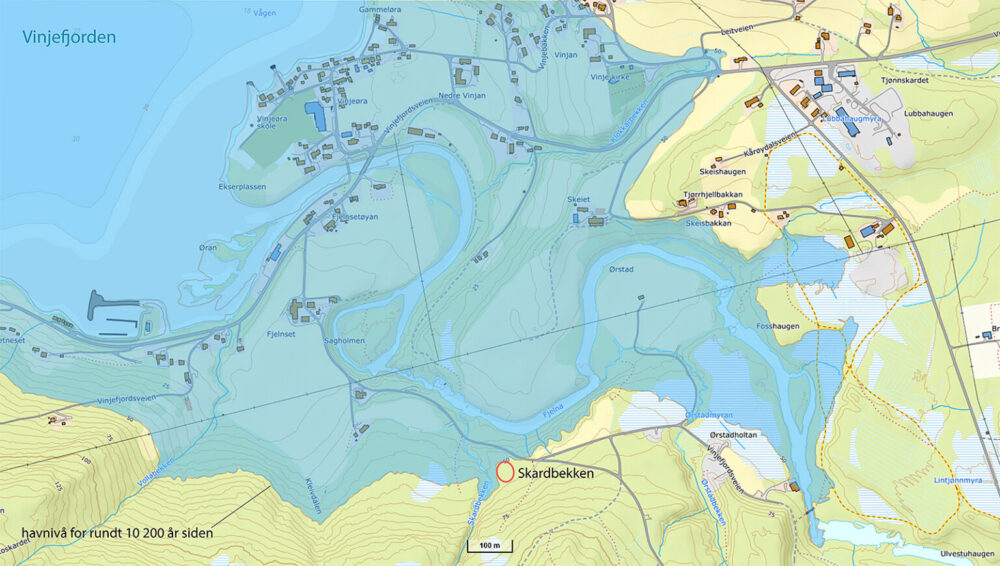
This map shows what the sea level – and shoreline – was like 10,200 years ago. The red ring shows the excavation area at Skardbekken. Illustration: Silje Elisabeth Fretheim
However, the archaeologists can’t decide on their own where to excavate, so they haven’t been able to focus their search for settlements from the people from the east. The reason for this is that archaeological excavations are usually carried out in connection with new infrastructure or buildings. This excavation, for example, is being carried out because the Norwegian Public Roads Administration is developing the new E39 road through Vinjeøra.
“We have dreamed of finding this for a long time and we were dealt a perfect hand here,” Fretheim said.
Hard hat for dinner?
This author takes her responsibilities as a journalist seriously, so I had to put Fretheim on the spot. Will she have to eat her hard hat?
“We are currently dating the settlement as being around 10,200 to 10,300 years old, based on the local beach displacement curve. So I have narrowly avoided having to eat my hard hat, even though the settlement turned out to be something other than what I first thought,” she said.
